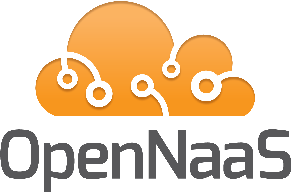Where to start?
End-User
End-users don't run their own instance of OpenNaaS. Instead they consume OpenNaaS enabled services either directly from the web service or via additional middle-ware (i.e. cloud managers). In any case, we try to maintain pointers to known clients and connectors so interfacing with OpenNaaS is effort-less as possible. Take into account that for third party front-ends, documentation and support should be provided by the service provider.
If instead you want or need to make direct calls to the OpenNaaS remote API, glance over System Architecture to get a grasp of the basic concepts.
You'll need some kind of authentication in order to use the remote API. Which protocol is in place will depend on the OpenNaaS instance administrator setup. You can get and overall view of supported security protocols here. You can then explore the remote API.
Service Provider
Although this is traditionally a role performed by the infrastructure provider itself, the service provider builds value services by, for example, aggregating infrastructure resources and/or improved orchestration.
As a service provider you can consume the services from Infrastructure Providers and/or other Service Providers. In that case, see the End-User section above for pointers on how to interface with OpenNaaS. Also, you can host your own OpenNaaS instance in order to power your infrastructure services.
You are now ready to extending OpenNaaS and develop your NaaS enabled applications.
Infrastructure Provider
Infrastructure owners can use OpenNaaS to expose all or part of their network resources and have tight control on how those are lent and exploited. This schema is for owners who prefer to rent raw infrastructure instead of creating value services themselves. For a mix role check Service Provider above.
The infrastructure provider should check the compatibility matrix for supported devices or additional needed drivers.
After getting an overview of OpenNaaS architecture and concepts, the provider needs to setup a his own OpenNaaS instance. There are several security setups available that differ on the operator's policy and existing security infrastructure.
Search space
Table of Contents
